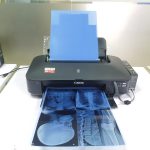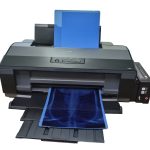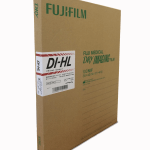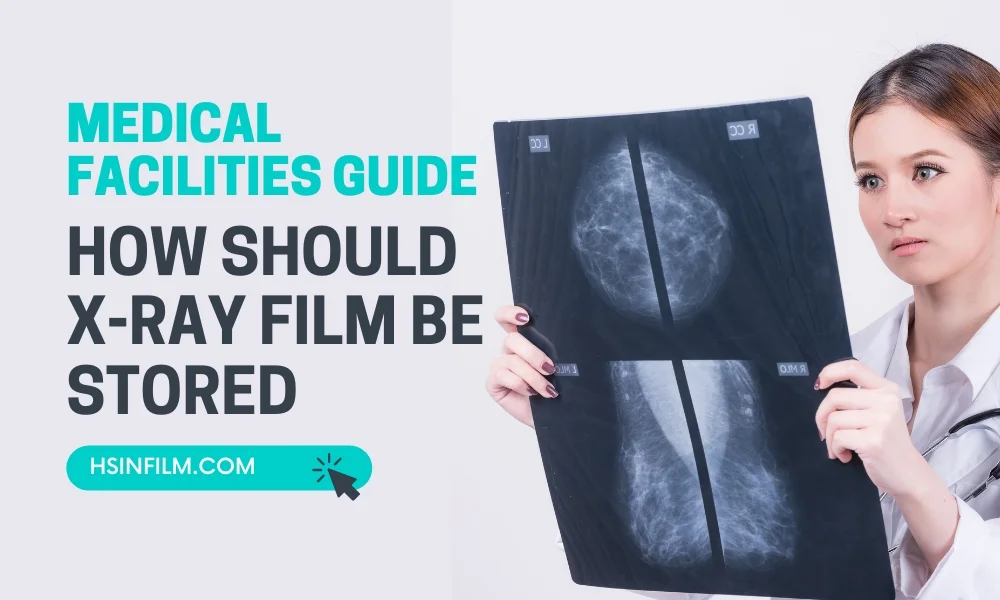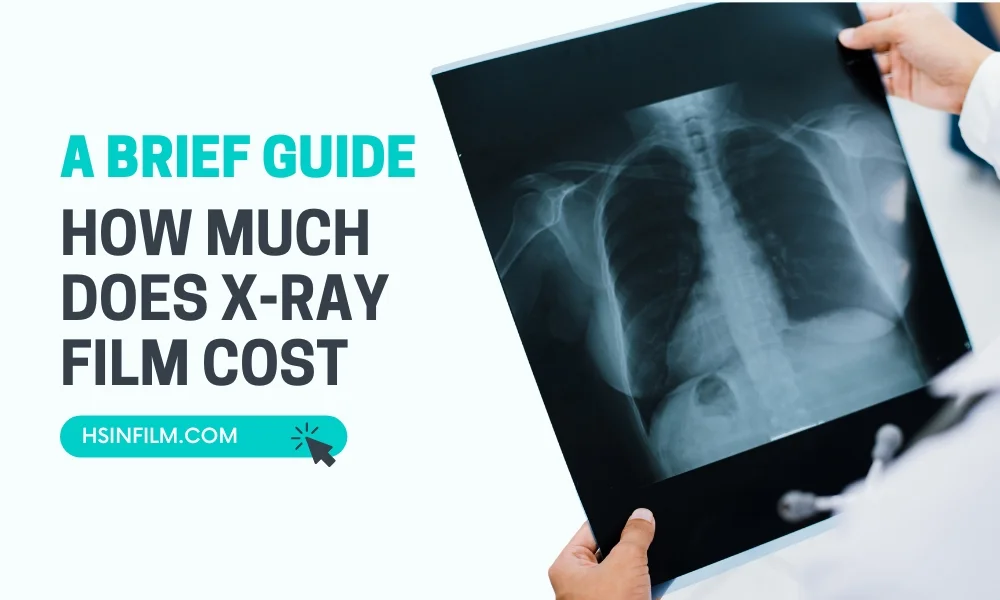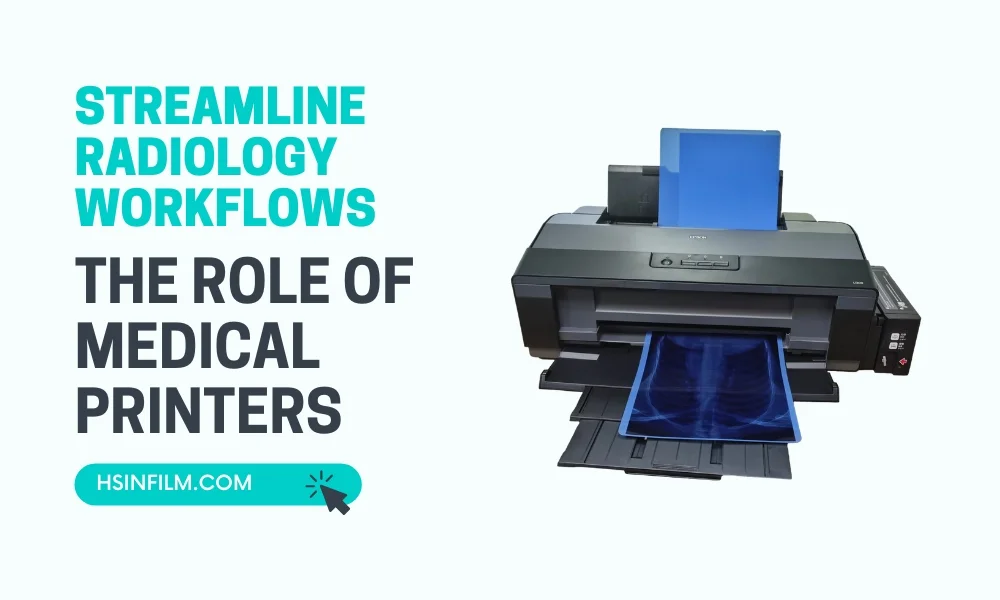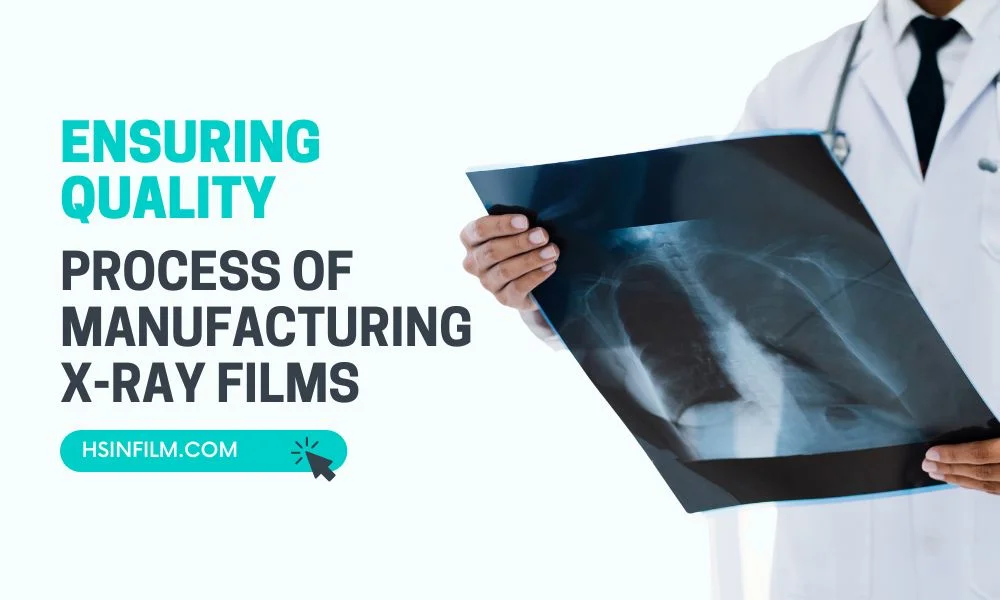Can Medical Laser Film Revolutionize Orthopedics for Clearer Diagnostics? In the field of orthopedics, accurate diagnosis is essential for effective treatment. Whether it’s a bone fracture, joint issue, or other musculoskeletal condition, clear imaging plays a crucial role in identifying problems and planning interventions. One of the most important tools in this process is laser film, which provides high-quality images that aid in precise diagnostics. In this blog post, we’ll explore the role of laser film in orthopedics, focusing on how it contributes to clear imaging in bone and joint diagnostics.
Table of Contents: Laser Film and Orthopedics
Introduction to Medical Laser Film
What is Laser Film?
Laser film is a type of medical imaging film that is used to produce high-resolution images from digital data. Unlike traditional X-ray films, which rely on the direct exposure of film to radiation, laser films are created using laser printers. These printers convert digital images into hard copies by precisely etching the image onto the film with a laser beam. The result is a detailed and accurate representation of the scanned area, which is essential for diagnosing orthopedic conditions.
Advantages of Laser Film
Laser film offers several advantages over traditional imaging methods:
- Speed: The process of printing laser film is faster, allowing for quicker diagnosis and treatment planning.
- High Resolution: Laser film provides exceptional image clarity, making it easier for healthcare professionals to detect subtle abnormalities in bones and joints.
- Consistency: Since the images are digitally produced and then printed, the quality remains consistent, reducing the risk of errors.
- Durability: Laser film is more durable than traditional film, withstanding handling and storage better, which is crucial for long-term patient records.
Also read: Patient-Centric Medical Laser Film: How Laser Imaging Enhances the Diagnostic Experience
The Role of Laser Film in Orthopedics
Enhancing Bone Fracture Diagnosis
Bone fractures are among the most common issues in orthopedic practice. Clear imaging is vital to accurately diagnose the type, location, and severity of the fracture. Laser film’s high resolution makes it easier to detect even small or hairline fractures that might be missed with lower-quality imaging methods. This accuracy is critical in ensuring that patients receive the appropriate treatment, whether it involves casting, surgery, or physical therapy.
Diagnosing Joint Issues
Orthopedics also deals with various joint problems, such as arthritis, dislocations, and ligament injuries. Laser film is particularly useful in imaging joints because it can capture fine details that are essential for assessing the condition of cartilage, ligaments, and bones. For instance, in cases of arthritis, laser film can help in visualizing the extent of joint space narrowing, bone spurs, and other degenerative changes, enabling doctors to determine the best course of treatment.
Monitoring Healing and Recovery
After treatment for fractures or joint issues, monitoring the healing process is crucial. Laser film allows for consistent imaging over time, making it easier to track changes and ensure that the bones or joints are healing properly. This consistency helps in making timely decisions about whether additional interventions are needed, such as adjusting a cast or recommending further physical therapy.
How Laser Film Improves Diagnostic Accuracy
Reducing Diagnostic Errors
One of the key benefits of laser film is its ability to reduce diagnostic errors. With traditional film, variations in exposure, processing, and handling can lead to inconsistencies in image quality. These inconsistencies can result in misinterpretation of the images, potentially leading to incorrect diagnoses. Laser film, on the other hand, offers uniform quality, reducing the likelihood of such errors and improving overall diagnostic accuracy.
Facilitating Better Communication
Clear and accurate imaging is not only important for diagnosis but also for communication between healthcare providers. In many cases, orthopedic conditions require a team-based approach, involving surgeons, radiologists, physical therapists, and other specialists. Laser film ensures that all team members are looking at the same high-quality images, making it easier to collaborate and develop a comprehensive treatment plan.
Enhancing Patient Understanding
Patients often have difficulty understanding their conditions based solely on verbal explanations. Laser film images provide a visual aid that doctors can use to explain the problem and the proposed treatment. For example, a patient with a knee injury can see the extent of the damage in the joint, which can help them understand why surgery might be necessary. This improved understanding can lead to better patient compliance and outcomes.
Laser Film in Specific Orthopedic Applications
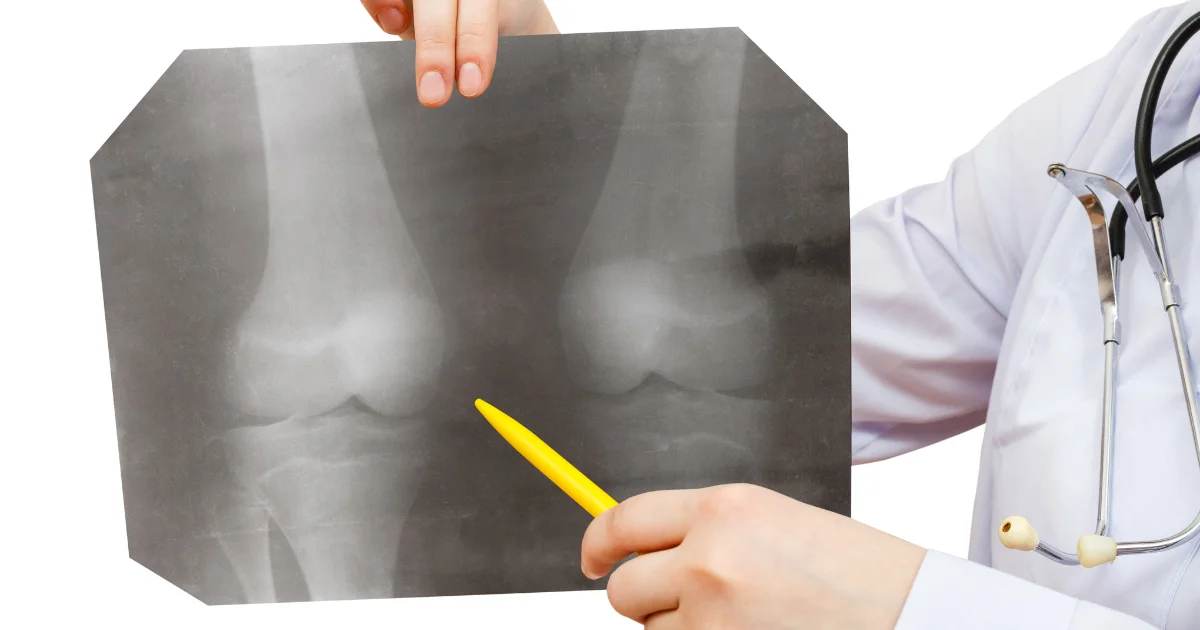
Spinal Imaging
Spinal issues, such as herniated discs, scoliosis, and fractures, require precise imaging for accurate diagnosis and treatment planning. Laser film’s ability to capture detailed images of the spine, including the vertebrae and intervertebral discs, makes it an invaluable tool in orthopedic practice. These images can help in determining the best approach for surgery or other interventions and in monitoring postoperative recovery.
Imaging of Hands and Feet
The bones in the hands and feet are small and intricate, making them challenging to image accurately. Laser film’s high resolution is particularly beneficial in these cases, as it allows for the detailed visualization of even the smallest bones and joints. This clarity is crucial for diagnosing conditions such as fractures, arthritis, and deformities, as well as for planning surgical procedures like joint replacement or reconstruction.
Imaging in Pediatric Orthopedics
Children’s bones are still growing, which can make orthopedic imaging more complex. Laser film is well-suited for pediatric orthopedics because it provides clear images without the need for repeated exposure to radiation. This is especially important in cases where ongoing monitoring is required, such as in the treatment of congenital deformities, growth plate injuries, or scoliosis. The ability to produce consistent and accurate images over time is key to ensuring that children receive the best possible care.
The Future of Laser Film in Orthopedics
Integration with Digital Imaging Systems
As digital imaging continues to evolve, the integration of laser film with these systems is likely to become more seamless. This integration will allow for even faster and more accurate imaging, as well as improved storage and retrieval of patient records. Additionally, the ability to easily share digital images with other healthcare providers will enhance collaboration and improve patient care.
Advances in Laser Film Technology
Ongoing advancements in laser film technology are likely to further improve image quality and reduce costs. New developments could include films that are even more sensitive to subtle differences in tissue density, allowing for earlier detection of conditions such as osteoporosis or bone tumors. Additionally, advances in laser printing technology may lead to faster and more efficient production of images, further streamlining the diagnostic process.
Sustainability and Cost-Effectiveness
As the healthcare industry becomes more focused on sustainability, there is a growing interest in environmentally friendly medical practices. Laser film, with its durability and efficiency, is well-positioned to meet this demand. Its long-lasting nature reduces the need for frequent reprints, and the potential for recycling or safe disposal of used films could make it a more sustainable option compared to traditional X-ray films.
Training and Education for Orthopedic Professionals
The use of medical laser film extends beyond clinical practice—it’s a vital tool in educating the next generation of orthopedic professionals. Medical schools, residency programs, and continuing medical education courses rely on clear and accurate images to train orthopedic surgeons and radiologists. By incorporating medical laser film into educational settings, students gain exposure to the same technology they’ll use in their careers, ensuring a seamless transition to clinical practice. It fosters a deeper understanding of orthopedic imaging techniques and empowers future professionals to provide the highest level of patient care.
The Global Impact of Clear Orthopedic Imaging
The impact of medical laser film in orthopedics isn’t confined to a single region. It’s a global phenomenon, with orthopedic professionals around the world reaping the benefits of clearer diagnostics. Sharing success stories and advancements from various parts of the world highlights the universality of this technology. Whether it’s a rural clinic in Africa, a bustling hospital in Europe, or a cutting-edge facility in Asia, medical laser film is transforming the way orthopedic conditions are diagnosed and treated, creating a brighter future for patients worldwide.
Addressing Challenges and Concerns
Like any advancement, medical laser film in orthopedics faces challenges and concerns. It’s essential to address potential limitations, such as cost implications and accessibility, and discuss how these challenges are being tackled. Additionally, considerations related to data security and patient privacy in the digital era are critical. Clear communication and transparency in addressing these issues are key to building trust among orthopedic professionals and patients.
Regulatory and Safety Standards
Maintaining high standards of patient safety and data security is paramount in orthopedic care. Discuss the regulatory and safety standards that govern the use of medical laser film in orthopedics. Highlight the certifications and protocols in place to ensure that patient information remains confidential and that the technology complies with the highest industry standards. Emphasize how these standards contribute to the reliability and trustworthiness of medical laser film in orthopedics.
Collaboration in Orthopedic Care
Orthopedic care is a collaborative effort. Orthopedic surgeons, radiologists, physiotherapists, and other specialists work together to ensure the best outcomes for patients. Medical laser film enhances communication and collaboration among these professionals. It enables them to share high-quality images, discuss cases, and develop treatment plans with precision and efficiency. By highlighting the role of medical laser film in this teamwork, you underscore its importance in delivering holistic orthopedic care.
Conclusion: Bringing Clarity to Orthopedics
Laser film has revolutionized imaging in orthopedics, providing clear, accurate, and consistent images that are essential for diagnosing and treating bone and joint conditions. From enhancing diagnostic accuracy to improving patient understanding, laser film plays a vital role in modern orthopedic practice. As technology continues to advance, the use of laser film in orthopedics is likely to grow, further improving the quality of care for patients with musculoskeletal issues.
By understanding the benefits and applications of laser film, healthcare providers can make informed decisions about its use, ultimately leading to better patient outcomes and more efficient healthcare delivery. Whether in diagnosing fractures, planning joint surgeries, or monitoring recovery, laser film is an indispensable tool in the field of orthopedics.
HSIN Film’s Solution
In the world of medical laser film, HSIN Film is at the forefront of quality. Their commitment to delivering top-tier laser film solutions has revolutionized orthopedics. With HSIN Film, the future of clear diagnostics is brighter than ever.
With medical laser film, orthopedics steps into a new era of clarity, accuracy, and safety. It’s the spotlight that reveals the intricate world of bones and joints, ensuring that every diagnosis is as clear as day. And with HSIN Film leading the way, the future is even more promising.
FAQ
1. What role does laser film play in orthopedic diagnostics?
Laser film is instrumental in orthopedic diagnostics, offering clear and precise imaging of bones, joints, and surrounding tissues, aiding in the detection and evaluation of fractures, degenerative conditions, and soft tissue injuries.
2. How does laser imaging technology enhance bone and joint diagnostics?
Laser imaging technology provides high-resolution images with exceptional detail and contrast, allowing orthopedic specialists to visualize subtle abnormalities, assess bone density, and accurately plan surgical interventions for optimal patient outcomes.
3. What are the advantages of using laser film in orthopedic imaging?
The advantages of using laser film in orthopedic imaging include superior image quality, reduced radiation exposure compared to traditional x-ray methods, shorter imaging times, and compatibility with digital systems for efficient storage and sharing of images.
4. Is laser imaging suitable for all types of orthopedic conditions?
Laser imaging is highly versatile and can be utilized for a wide range of orthopedic conditions, including fractures, arthritis, ligament injuries, spinal disorders, and sports-related injuries, providing valuable insights for diagnosis, treatment planning, and monitoring.
5. How does laser film contribute to surgical planning in orthopedics?
Laser film facilitates precise preoperative planning by enabling orthopedic surgeons to accurately assess the extent and severity of musculoskeletal conditions, identify optimal surgical approaches, and anticipate potential challenges during procedures.
6. What considerations should orthopedic practitioners keep in mind when incorporating laser imaging technology?
Orthopedic practitioners should consider factors such as equipment compatibility, staff training, patient positioning, image interpretation skills, and cost-effectiveness when incorporating laser imaging technology into their practice to ensure efficient and effective utilization.
7. Can laser imaging detect subtle bone and joint abnormalities not visible on traditional x-rays?
Yes, laser imaging has the capability to detect subtle bone and joint abnormalities that may not be visible on traditional x-rays, thanks to its superior resolution and contrast enhancement capabilities, leading to more accurate diagnoses and treatment decisions.
8. How does laser film contribute to patient care in orthopedics?
Laser film contributes to enhanced patient care in orthopedics by providing orthopedic specialists with the detailed information needed to formulate personalized treatment plans, minimize surgical risks, optimize postoperative outcomes, and improve overall patient satisfaction.
9. Are there any ongoing advancements in laser film technology for orthopedic applications?
Ongoing advancements in laser film technology for orthopedic applications include improvements in image resolution, development of specialized imaging protocols for specific orthopedic conditions, integration with artificial intelligence for automated analysis, and enhanced ergonomic design for improved patient comfort.
10. How does laser imaging impact the future of orthopedic diagnostics and treatment?
Laser imaging holds promise for revolutionizing orthopedic diagnostics and treatment by providing orthopedic practitioners with advanced tools to accurately diagnose conditions, tailor treatment strategies to individual patient needs, and achieve optimal clinical outcomes in bone and joint health.


